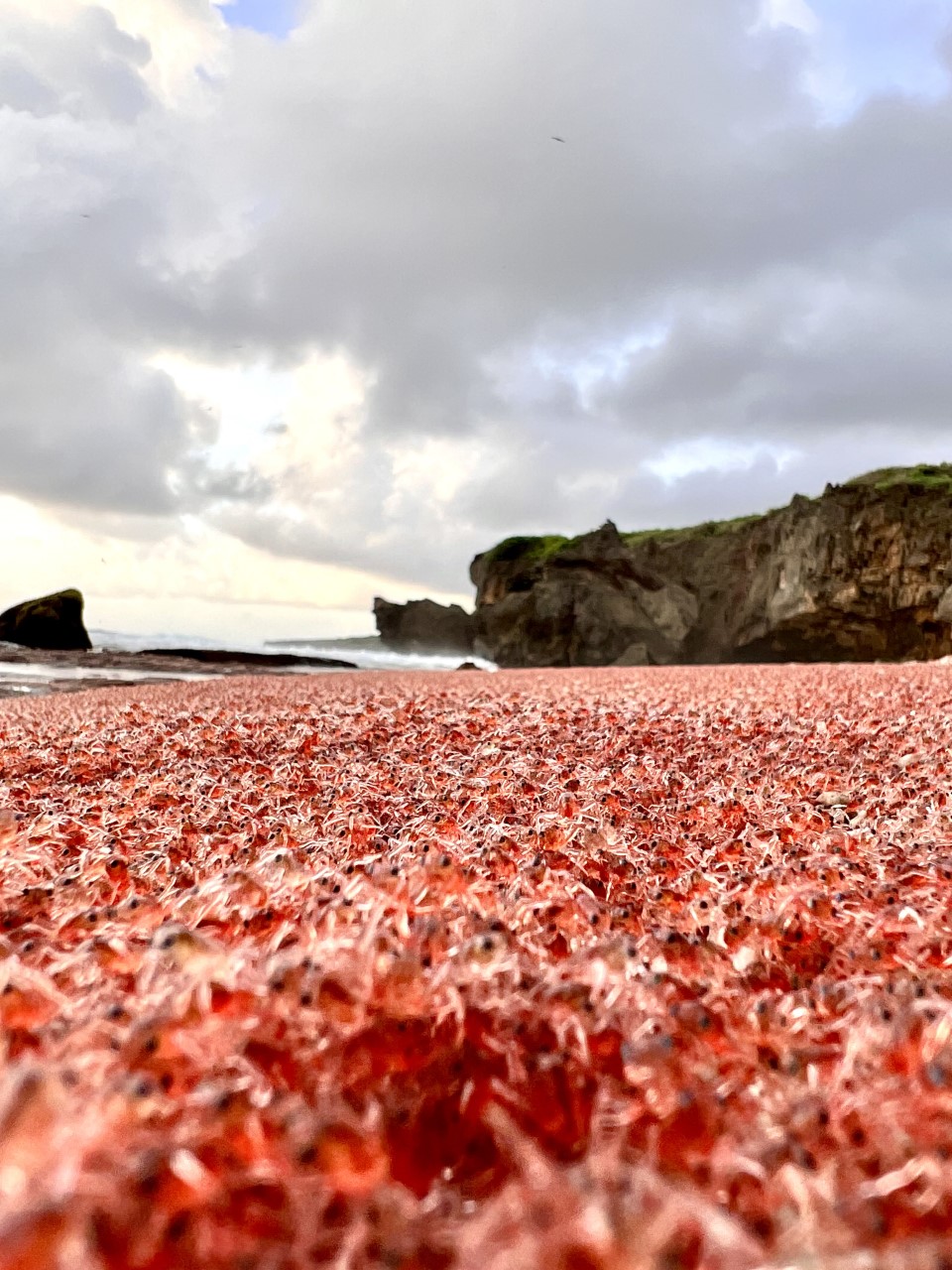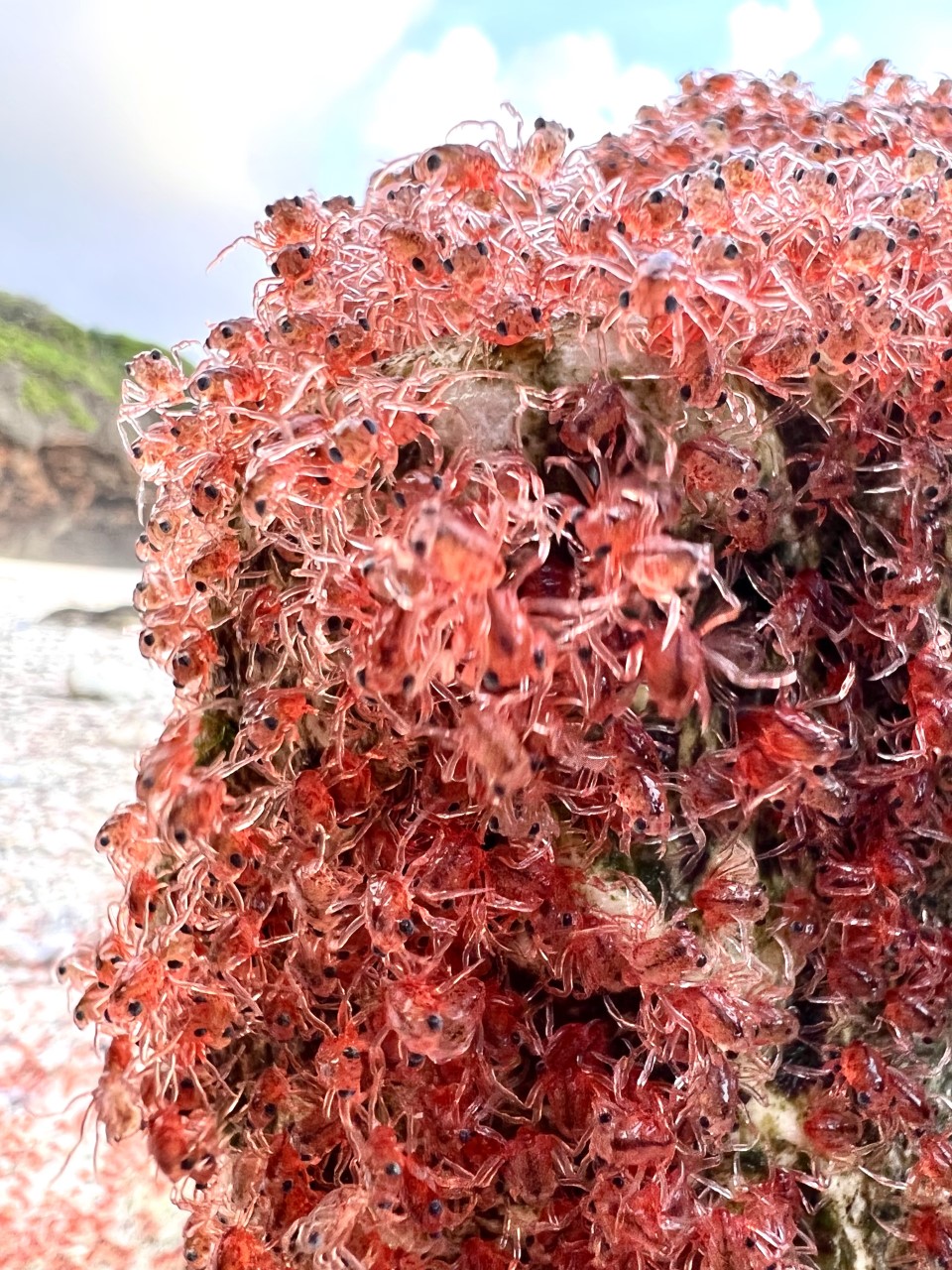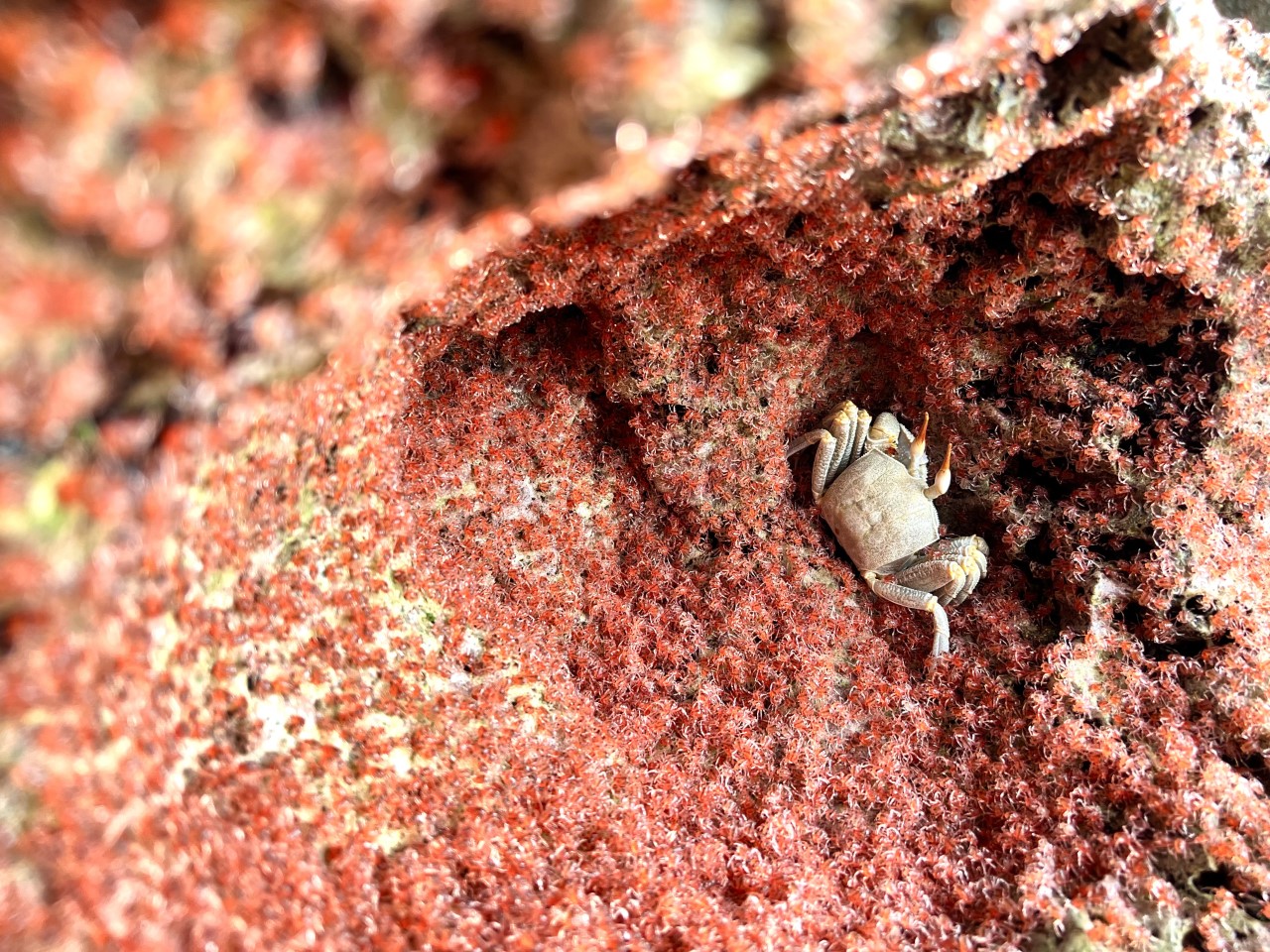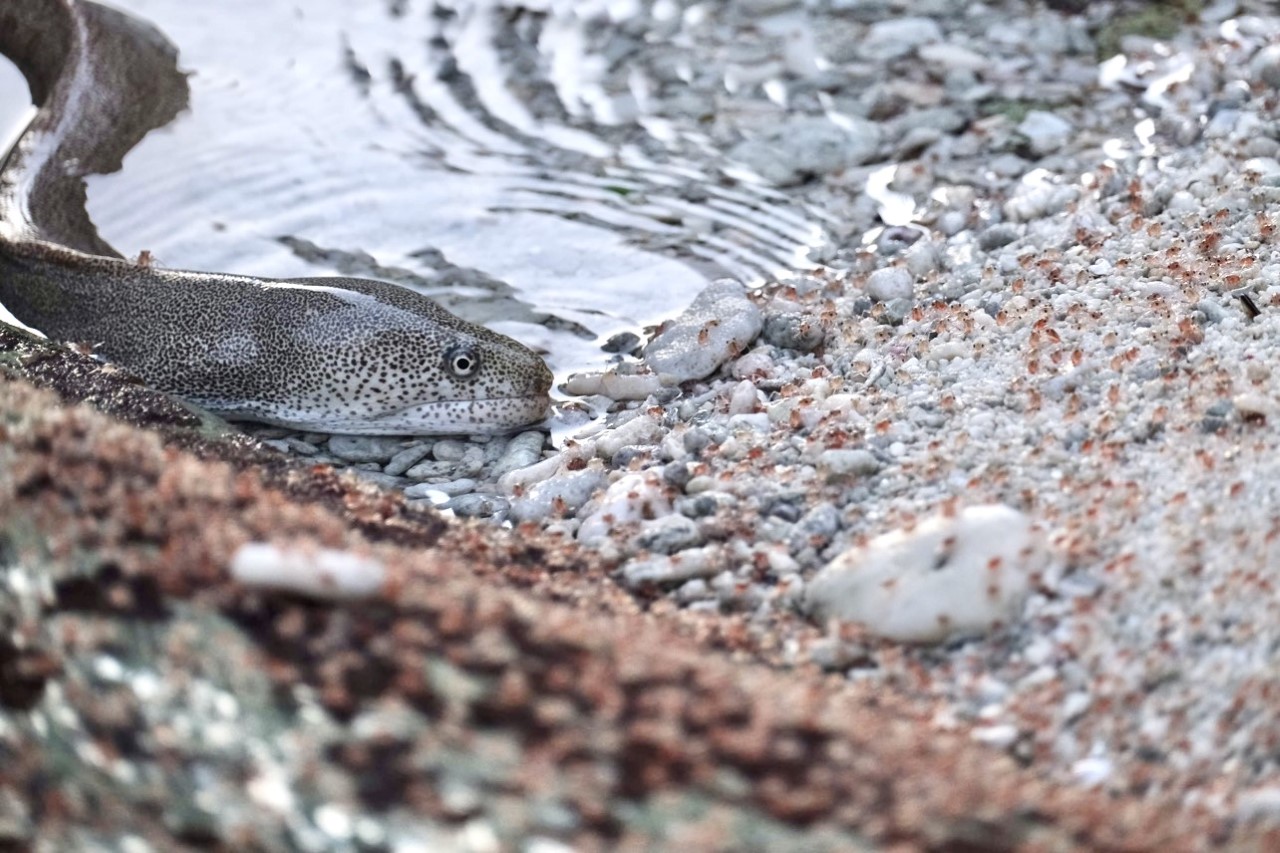Greatest show on Earth: crabby babies return in time for Christmas

It’s one of the greatest shows on Earth and finally the wait is over. At the end of last year, adult Christmas Island red crabs (Gecarcoidea natalis) made their annual journey from the forest to the sea to spawn. Now, their babies are making their way back to shore.
Christmas Island, an Australian territory 2600km north-west of Perth, is home to the world’s only known red crab migration, an annual event that naturalist Sir David Attenborough described as ”one of the most spectacular migrations he’s ever seen” and “one of his greatest ever TV moments”.


Locals, Kylie Chatfield and Karenn Singer travelled to Greta Beach (yesterday), on the eastern side of the island, for some sunrise photography. But, to their delight, there was an extra shade of blush covering the cliffs.
“It was just phenomenal,” says Kylie, a science teacher on the island. “To witness the flurry of a billion baby crabs heading in from the sea to the jungle, trying to avoid the influx of eels and other crab species wanting to gorge on them – it was an epic sight. The ghost crabs that normally scuttle swiftly away, just sat there looking at us, too full to move.”

Kylie says that while her students loved watching the eel video, which she took to school, “it’s all second nature to them really.
“Shaking baby red crabs out of shoes when getting ready for school is kind of a given and all part of life here on the island.”
Karenn (Kaz) says, “We took an early morning trip to see the sunrise on Greta Beach but were so excited to see the red tide of crabs leaving the ocean to embark on their life on the land. After the spawning event, it’s an anxious wait to see if the babies will return”.
And they don’t always.
Last year, an estimated 189 million of them made their way back, which was the largest migration on record. The previous year 50 million, and the year before that, well, zero. There’s still so much we don’t know, including what happens after the mothers’ spawn in the sea and when the juveniles return – where do they go to mature? And how are they effected by tides, currents, swell and other weather factors.
“This was the first sighting of the return of the babies this year,” says Kaz. “Each year is different. We never know what will happen. This year’s spawning event was quiet and the eggs were released into a massive swell, so we were all a bit worried about the less-than-ideal conditions. It’s a relief then to see the next generation appearing. It’s such a joy to witness, even if you have seen it many times before.
“And the eels certainly were enjoying a feast. There were a few in the rockpools devouring them. It’s such an abundant time. Life and death in each mouthful.”

Personally, I find it particularly disturbing that the mother crabs also sit there, eating the babies, as they return.
British traveller, Johnny Ashwin, is a divemaster for Extra Divers Australia on the island, and has just witnessed his first epic red crab migration.
“It’s very impressive,” says Johnny. “I just love the idea that they are actually a land crab, but start their lives in the sea, and when they shed their shells it offers food for all big and small creatures that call Christmas Island home.”
Red crab larvae hatch from eggs the females spawn into the ocean – hatching as soon as they make contact with water. While we don’t know where they go, over the following month they grow through several larval stages into megalopae – a prawn-like animal. The megalopae then gather in pools close to shore for a further one or two days until becoming the fully formed baby crabs that emerge from the water and head for the forest where they stay hidden in rocky outcrops and forest debris for the first three years of their life.





